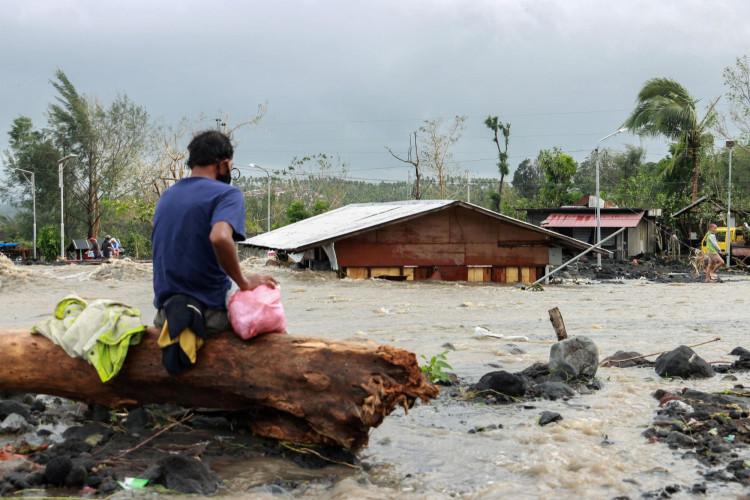Typhoon Goni was on a course taking into the South China Sea and was expected to reach Vietnam later this week. It left around 10 people dead in the Philippines and three missing.
Goni - the world's most powerful typhoon to date in 2020 - made landfall in the eastern Philippines' main and most populous island of Luzon, an initial report by authorities said.
Goni - known as Rolly in the Philippines - caused storm surges, flash floods, power outages and volcanic mudflows that buried houses before weakening as it headed toward Metro Manila, where the capital city's main airport was closed, authorities said.
Goni, which made landfall with intense winds early Sunday, appeared to have spared most areas in and around Manila, with a population of 13 million.
Peak sustained winds were projected at 195 miles per hour early Sunday before Goni barreled into Catanduanes Island, home to more than 260,000 residents.
The winds, equivalent to those of a Category 5 hurricane, made Goni comparable to Super Typhoon Haiyan - the deadly storm that ravaged Tacloban City in the Philippines in 2013 and killed more than 6,000 people.
More than 300 homes and small buildings were buried under rock and mud flows from Mayon Volcano in Albay province in the Bicol region, local disaster officials said.
Albay Gov. Al Francis Bichara said at least four people died - including a father and son from a rural village that was struck by boulders swept from Mayon volcano by mudflows and rain.
Storm surges hit coastal towns, while rivers overflowed and concrete dikes were knocked down, submerging several villages, local officials said.
Philippine President Rodrigo Duterte is monitoring the disaster response from his home in Davao city, presidential representative Harry Roque said.
Goni devastated a country already struggling from two typhoons in the past two weeks, the coronavirus pandemic, a financial crisis and a record jobless rate this year.






